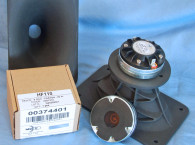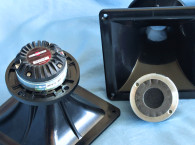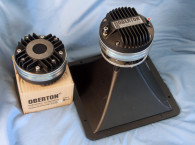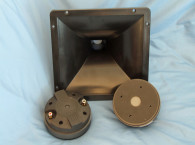

The core management team at REDCATT has been sourcing and building transducer components, sub-assemblies, and systems in China for more than 25 years. REDCATT has had direct experience with the challenges and risks of sourcing parts in China. The factory, the communications style, and business culture represent REDCATT’s desire to be “easy to work with.”
According to REDCATT, its team has extensive experience in the audio industry in all engineering and development stages — from design and development to quality control and manufacturing. REDCATT’s team members have been working around the world for the biggest companies in the audio market with direct R&D and manufacturing experience — including Mackie Designs, RCF, B&C Speakers, Røde Microphones, Event Electronics, and others. It also provides R&D engineering and has set up production facilities in Australia, Czech Republic, Italy, US, and China.
Designed for use with 1” throat horns, the REDCATT 140FCD compression driver is definitely in the running for this year’s best looking driver packaging (see Photo 1). The 140FCD has a 25.4 mm (1.0”) throat diameter driven by a 35.5 mm (1.45”) diameter voice coil wound with edge wound copper-clad aluminum wire (CCAW) on a non-conducting Kapton-type former, driving a polyimide composite diaphragm and vented surround (see Photo 2). The 140FCD also incorporates a unique motor system magnetic gap volume tuning developed by REDCATT. According to the company, this feature dramatically improves total harmonic distortion (THD) and the driver’s transient response.
Other features include a FEM-optimized ferrite magnet motor structure, continuous power handling of 70 W with a 40 W (AES) power handling rating, a 1500 Hz recommended crossover frequency (with a minimum 12 dB/octave high-pass network), and 1 W/1 m 110.5 dB sensitivity. Along with the 140FCD, I used a Faital Pro 1.0” STH100 80° × 70° elliptical Tractrix horn with a 1400 Hz cut-off frequency. The STH100 has been featured in Test Bench previously, so I will only show horizontal frequency response measurements, but in case you are curious, I am providing both horizontal and vertical polar plots.
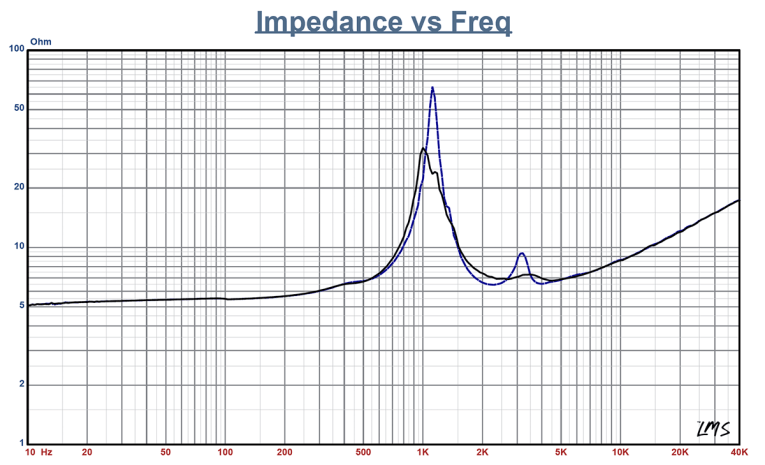
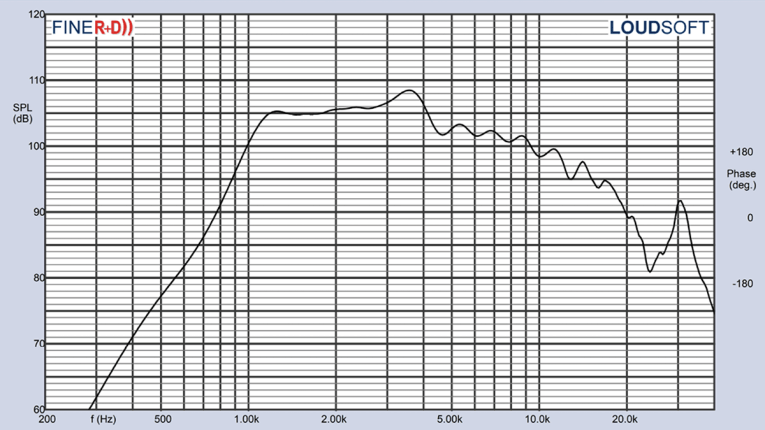
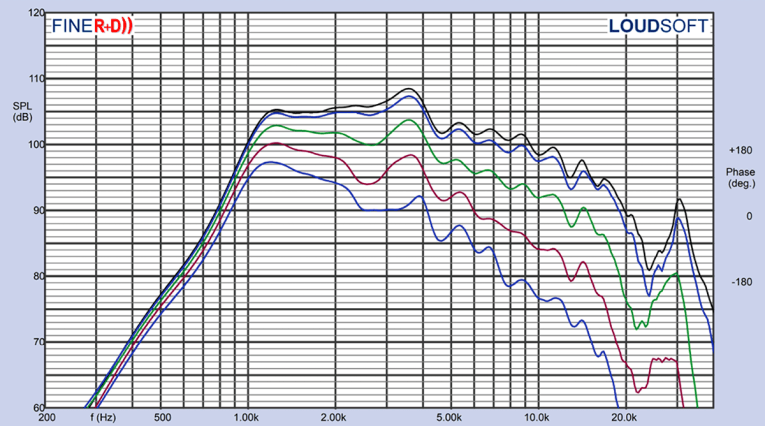

I used the LinearX LMS analyzer to produce the 300-point stepped sine wave impedance plot shown in Figure 1, with the solid black curve representing the 140FCD mounted on the STH100 horn and the dashed blue curve representing the compression driver without the horn. With a nominal 8 Ω impedance, the 140FCD has a 5.56 Ω DCR, with minimum impedance mounted on the STH100 horn of 6.78 Ω and at 4.47 kHz.
Next, I free-air mounted the 140FCD/STH100 combination without an enclosure and measured both the horizontal on- and off-axis at 2.0 V/0.5 m (normalized to 2.83 V/1 m) from 0° on-axis to 60° off-axis using the LoudSoft FINE R+D analyzer and the GRAS 46BE microphone. Figure 2 displays the on-axis frequency response of the 140FCD/STH100, which is ±5 dB with no major anomalies from the 1.5 kHz recommended crossover frequency to about 10 kHz, beginning its second-order low-pass roll-off between 10 kHz to 40 kHz.
Figure 3 shows the 0° to 60° on- and off-axis response in the horizontal plane. Figure 4 shows the normalized horizontal plane response. Figure 5 shows 180° horizontal polar plot (in 10° increments with1/3 octave smoothing applied), generated by the CLIO Pocket analyzer and accompanying microphone (courtesy of Audiomatica SRL).
Figure 6 shows the 180° vertical plane polar plot (also in 10° increments with 1/3 octave smoothing applied). Last, Figure 7 illustrates the two-sample SPL comparison showing the two REDCATT 140FCD compression driver samples to be closely matched within 0.5 dB to 0.75 dB or less above the recommended crossover frequency and through the remainder of the operating range.
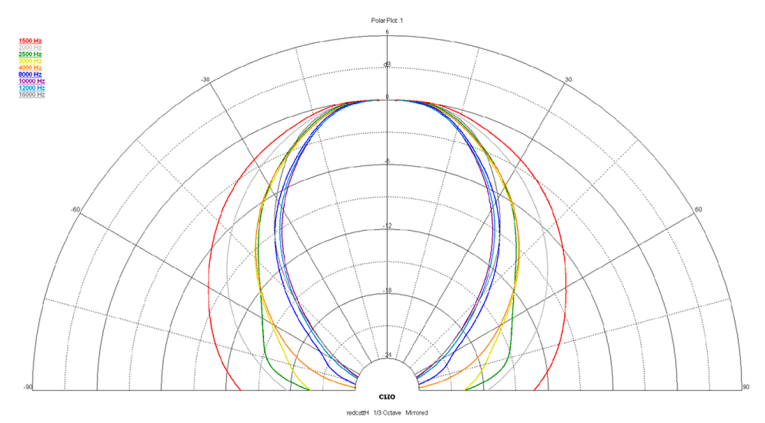

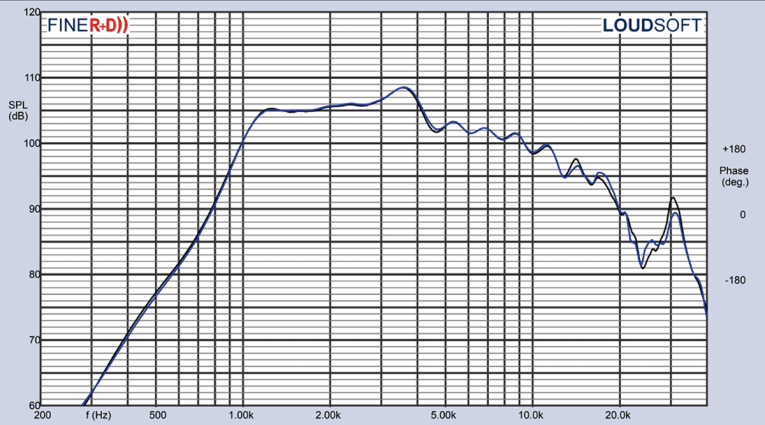
I again set up the Listen Inc. AudioConnect analyzer and 1/4” SCM microphone (provided by Listen, Inc.) to measure distortion and generate time-frequency plots. For the distortion measurement, I mounted the 140FCD/STH100 combination in free-air in the same manner as was used for the frequency response measurements. I set the SPL to 104 dB at 1 m (2.4 V determined by using a pink noise stimulus generator and internal SLM in the SoundCheck 17 software). Then, I measured the distortion with the Listen microphone placed 10 cm from the mouth of the horn. This produced the distortion curves shown in Figure 8. Note the extremely low third-harmonic level from 2 kHz to 10 kHz.
Following this test sequence, I set up SoundCheck 17 to generate a 2.83 V/1 m impulse response curve for this driver/horn combination and imported the data into Listen’s SoundMap Time/Frequency software. Figure 9 shows the resulting cumulative spectral decay (CSD) waterfall plot. Figure 10 shows the Short-Time Fourier Transform (STFT) plot.

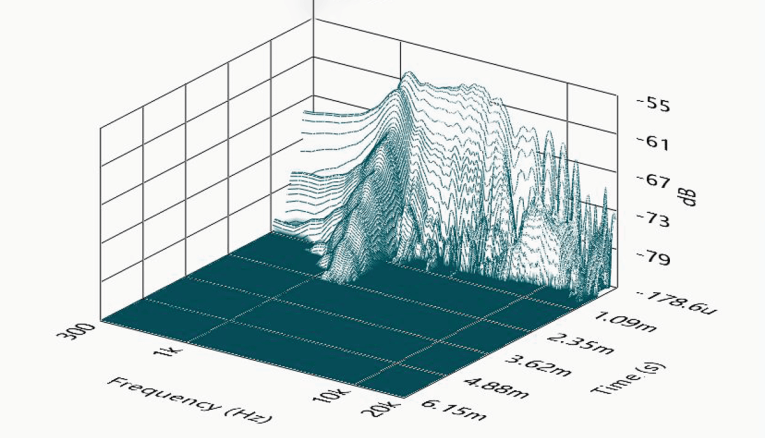
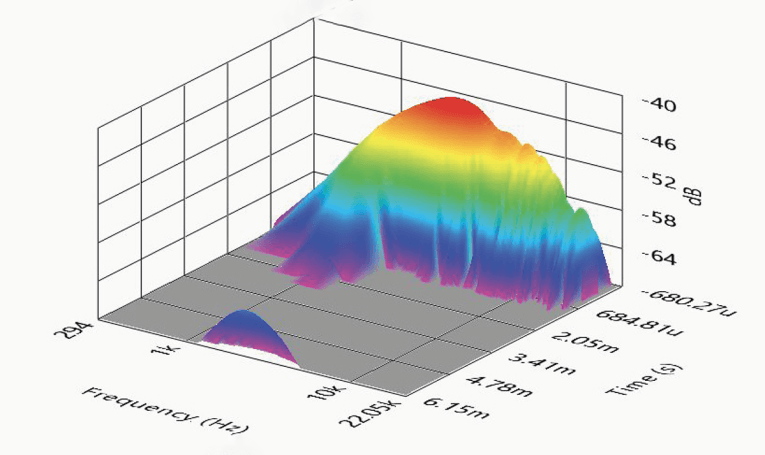
It is obvious that REDCATT engineering has a great sense of detail. The 140FCD is a well-engineered 1” compression driver, exhibiting good performance, great build quality, and it has absolutely stunning packaging and cosmetics! For more information, visit www.redcatt.net; or in the U.S., contact
David Stephens here. VC
This article was published originally in Voice Coil, August 2020.




